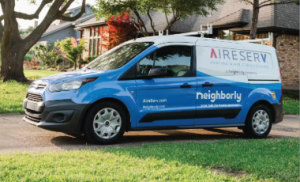Understanding the Importance of HVAC Safety
When it comes to our homes, safety should always be a top priority. One aspect of home safety that often goes overlooked is the HVAC system. Heating, ventilation, and air conditioning (HVAC) systems play a crucial role in maintaining a comfortable and healthy indoor environment. However, if not properly installed, maintained, or repaired, they can pose serious safety risks. Understanding the importance of HVAC safety is essential for protecting your home and loved ones.
One of the primary reasons why HVAC safety is crucial is the potential for carbon monoxide (CO) poisoning. According to the Centers for Disease Control and Prevention (CDC), carbon monoxide is an odorless, colorless gas that can cause sudden illness and even death. HVAC systems that are not properly installed or maintained can develop leaks, leading to the release of this deadly gas. In fact, the CDC reports that unintentional carbon monoxide poisoning accounts for an estimated 430 deaths in the United States each year. This statistic highlights the importance of ensuring proper installation and regular maintenance of HVAC systems to prevent such tragedies.
Another reason why HVAC safety is vital is the risk of electrical hazards. HVAC systems rely on electricity to function, and any faulty wiring or improper installation can lead to electrical fires or shocks. The National Fire Protection Association (NFPA) reports that heating equipment, including HVAC systems, is the second leading cause of home fires in the United States. This statistic emphasizes the need for proper installation by qualified professionals who adhere to safety guidelines and building codes.
Essential Safety Measures for HVAC Installation
To ensure the safety of your home during HVAC installation, it is crucial to follow essential safety measures. First and foremost, it is essential to hire a licensed and experienced HVAC contractor. A qualified professional will have the necessary knowledge and expertise to install the system correctly, minimizing the risk of safety hazards. Additionally, they will be familiar with local building codes and safety regulations, ensuring compliance during the installation process.
Proper ventilation is another critical safety measure during HVAC installation. Adequate ventilation helps prevent the buildup of carbon monoxide and other harmful gases. It is essential to ensure that the HVAC system is properly vented to the outside, following manufacturer guidelines and local building codes. Regular inspections by a professional can help identify any ventilation issues and address them promptly.
Furthermore, it is crucial to install smoke and carbon monoxide detectors near the HVAC system and throughout the home. These detectors serve as an early warning system, alerting occupants to potential safety hazards. Regularly testing and replacing the batteries in these detectors is essential to ensure their effectiveness.
Maintaining a Safe Environment with Regular HVAC Maintenance
Regular HVAC maintenance is key to maintaining a safe environment in your home. One of the most important maintenance tasks is changing the air filters regularly. Clogged or dirty filters can restrict airflow, leading to reduced system efficiency and potentially causing overheating. This can increase the risk of fires or other safety hazards. The U.S. Department of Energy recommends checking and replacing filters every one to three months, depending on the type of filter and the level of usage.
In addition to filter maintenance, it is crucial to schedule annual HVAC inspections by a qualified professional. These inspections can identify any potential safety issues, such as leaks, faulty wiring, or worn-out components. Regular maintenance can also help improve system efficiency, reducing energy consumption and lowering utility bills.
Ensuring Safety during HVAC Repairs and Troubleshooting
When it comes to HVAC repairs and troubleshooting, safety should always be a priority. It is essential to turn off the power to the HVAC system before attempting any repairs or maintenance. This can prevent electrical shocks or other accidents. Additionally, it is crucial to follow manufacturer guidelines and safety instructions when working on the system.
If you are not confident in your ability to safely repair or troubleshoot the HVAC system, it is best to leave it to the professionals. Attempting DIY repairs without the necessary knowledge and experience can lead to further damage or safety hazards. Hiring a licensed HVAC technician ensures that the repairs are done correctly and safely.
In conclusion, understanding and implementing HVAC safety guidelines is crucial for protecting your home and loved ones. Carbon monoxide poisoning, electrical hazards, and fires are just a few of the potential risks associated with improperly installed, maintained, or repaired HVAC systems. By following essential safety measures during installation, regular maintenance, and repairs, you can ensure a safe and comfortable indoor environment for years to come. Remember, when it comes to HVAC safety, it is always better to be proactive rather than reactive.

